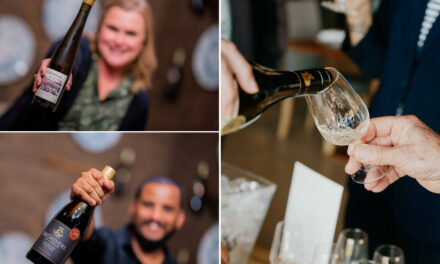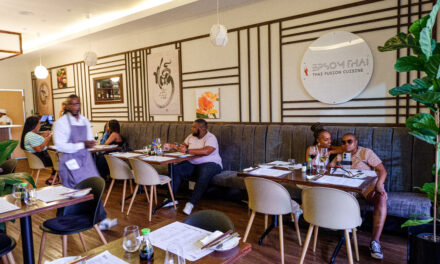Valletta, 26 October 2024 – Offshore racing is sailing’s gruelling discipline. It is arduous, unpredictable and places immense strain on competing crews. Throughout a gripping 45th edition of the 606-nautical mile (1,122 kilometres) Rolex Middle Sea Race, the qualities of perseverance, adaptability and dedication came to the fore as the 112-strong fleet confronted the vagaries of the both the weather and the contest itself. Success at one of the world’s foremost 600-nautical mile races demands the maximum from each individual and every crew as a collective. Rolex has partnered the Rolex Middle Sea Race and its organizers Royal Malta Yacht Club (RMYC) since 2002.
The story behind the winners of the race’s main prizes, Red Bandit and Scallywag 100, collecting overall victory on handicap and line honours respectively, is one of crews working together to overcome adversity. Red Bandit is a German-flagged TP52. Her crew, led by skipper Carl-Peter Forster, is made up of two professionals and 11 talented young sailors who have assiduously followed Forster’s charitable pathway programme designed to develop the offshore sailors of tomorrow. For Forster success was reward for the commitment which has gone into the initiative:
“It is a dream to win the Rolex Middle Sea Race. It is a bit unreal and will be for a while. When the crew started this project, they had very little knowledge of offshore or big boat sailing. We’ve come a long way over the last three years and everyone has learnt to sail this delicate machine. A TP52 is very difficult to handle both in the breeze and in the light winds. You can’t take your eyes off the instruments for a second.”

Skipper Carl-Peter Forster and the crew of Red Bandit, overall winner of the 2024 Rolex Middle Sea Race
RED BANDIT, Sail No: GER8399, Design: TP 52, IRC Class 2, Skippers: Carl-Peter Forster, Owner: Forstar Offshore Foundation, Boat Country: Germany
The crew had to contend a brutal first night at sea. On the stretch along the east coast of Sicily from Capo Passero to the Messina Strait, and with the mighty volcano of Etna illuminating the night sky, the fleet were besieged by a violent thunderstorm. Twelve months earlier, Red Bandit faced misfortune when forced to retire from the race at a similar stage because of equipment damage. This year the boat proved more robust and, as Red Bandit navigator Joshua Weber explains, the race proved a relentless experience:
“There are lots of decisions to take and things to figure out. The race has many individual segments and longer stretches in between that you have to get right. It comes down to the whole team not just putting the boat in the right place but getting it there and going as fast as possible. It requires a huge, combined effort.”

Throughout the 22 years of its partnership with Rolex, the race has evolved significantly in terms of the quantity and quality of entrants. The front of the monohull fleet saw the presence of two of the world’s imperious 100-foot (30.48 metre) Maxis – Scallywag 100 (HKG) and Black Jack 100 (MON) – together with the 88-ft (27m) Lucky (USA), which under its previous guise as Rambler 88 claimed line honours at the race on five occasions.
The predicted tight contest played out. Throughout the race, Scallywag 100 and Black Jack 100, frequently exchanged leadership of the race. The key moment came when Scallywag 100’s decorated Spanish navigator Juan Vila made an inspired tactical call when rounding Lampedusa, one of the last main junctures in the race. The decision was not to tack but head into a cloud to gain a better angle. A calculated risk which allowed her to pull away from her rival. Scallywag 100 arrived back in Malta to post a winning elapsed time of two days, 21 hours, 33 minutes and 29 seconds.

SCALLYWAG 100, Sail No: HKG2276, Design: DOVELL 100, IRC Class 1, Skippers: David Witt, Owner: Seng Huang Lee, Boat Country: Hong Kong
LUCKY, Sail No: USA2872, Design: JUAN K 27M, IRC Class 1, Skippers: Daniel Hedges, Owner: Bryon Ehrhart, Boat Country: United States
Scallywag 100 owner Seng Huang Lee has committed significant time and energy into the team’s campaign, with the crew fully focused on delivering success and sailing the boat to its maximum potential. Line honours victory provided immense satisfaction for skipper David Witt and the crew after the devastation of retiring from last year’s Rolex Sydney Hobart Yacht Race following a broken bowsprit:
“This is a really prestigious Rolex race and a test to see if we did the right thing. That’s one of the toughest races I’ve done in a 100-footer. It was a massive team effort. I am really proud of the team – we never made a mistake. Starting and finishing in Malta is fantastic and something we’d like to do it again.”

SCALLYWAG 100, Sail No: HKG2276, Design: DOVELL 100, IRC Class 1, Skippers: David Witt, Owner: Seng Huang Lee, Boat Country: Hong Kong
Line Honours
Black Jack 100 may have come short in delivering line honours but skipper Tristan Le Brun was full of praise for their relentless pursuit and commitment to push all the way to the finish:
“At the end of the day, this is a team sport, and this is the most important part of it. We were a great team before the start. We were a great team during the race. And, now, we are a great team after the finish line even if we are not where we want to be.”

Start of the Rolex Middle Sea Race, 2024
Success at the Rolex Middle Sea Race is not merely defined by trophies. Completing the course is never a given. Most crews faced a minimum of five nights at sea. The threat of boat damage is constant. Every sail hoist, navigational call and tactical decision is vital.
For no crew is this more pronounced than those sailing double-handed such as Czech sailors Milan Koláček and Milan Tomek on the 36-ft (10.97m) Marina 21. From contemplating retiring from the race, they prevailed to win their class at their first offshore race as a duo. Their story of mental fortitude perfectly demonstrate the prevailing team spirit:
“The race was exhausting. At one point we considered retiring, we were tired and had broken the main sail. We thought about sailing back to Valletta. But we made the decision to continue, first to make it towards Sicily, repair the main sail, and then see where we were in the rankings. We don’t like to give up.”

MARINA 21, Sail No: GRE3622, Design: BENETEAU FIRST 36, IRC Class 5, Skippers: Milan Kolacek & Milan Tomek, Owner: Victor Abdelkerim, Boat Country: Greece
Overcoming adversity and achieving it as a collective defines all of the 600-nautical mile offshore classics supported by Rolex. The 2024 Rolex Middle Sea Race has ably demonstrated that an intrepid human spirit is a hallmark characteristic of offshore racing and in Rolex’s longstanding support for this eternally appealing discipline of yachting.



























